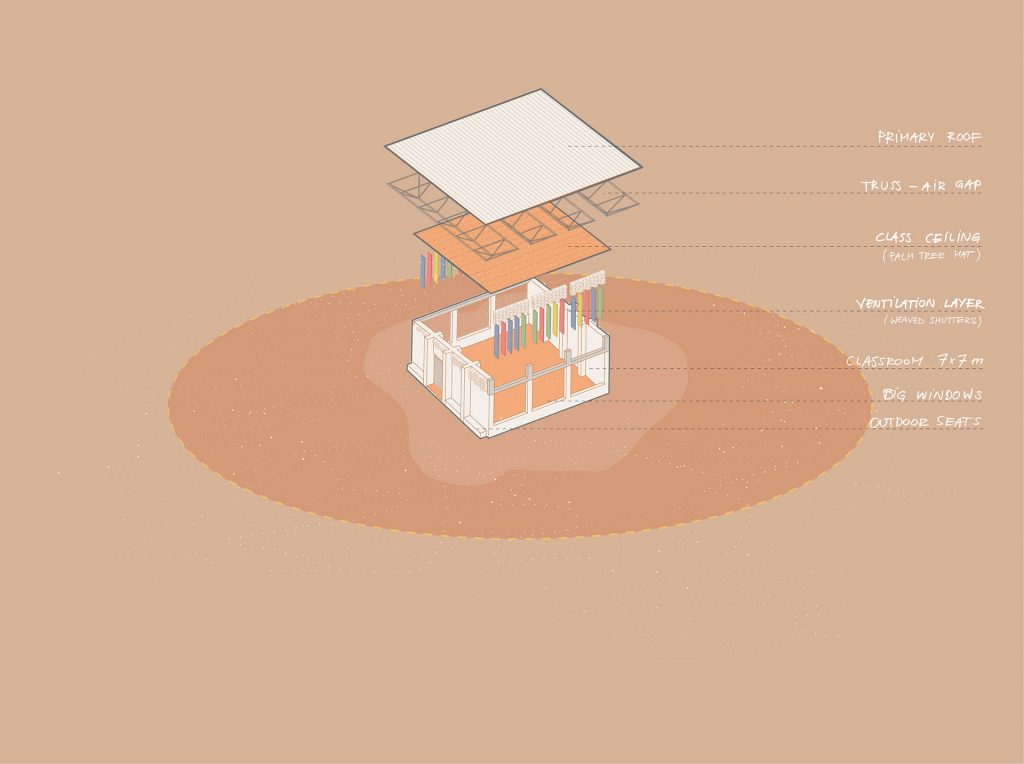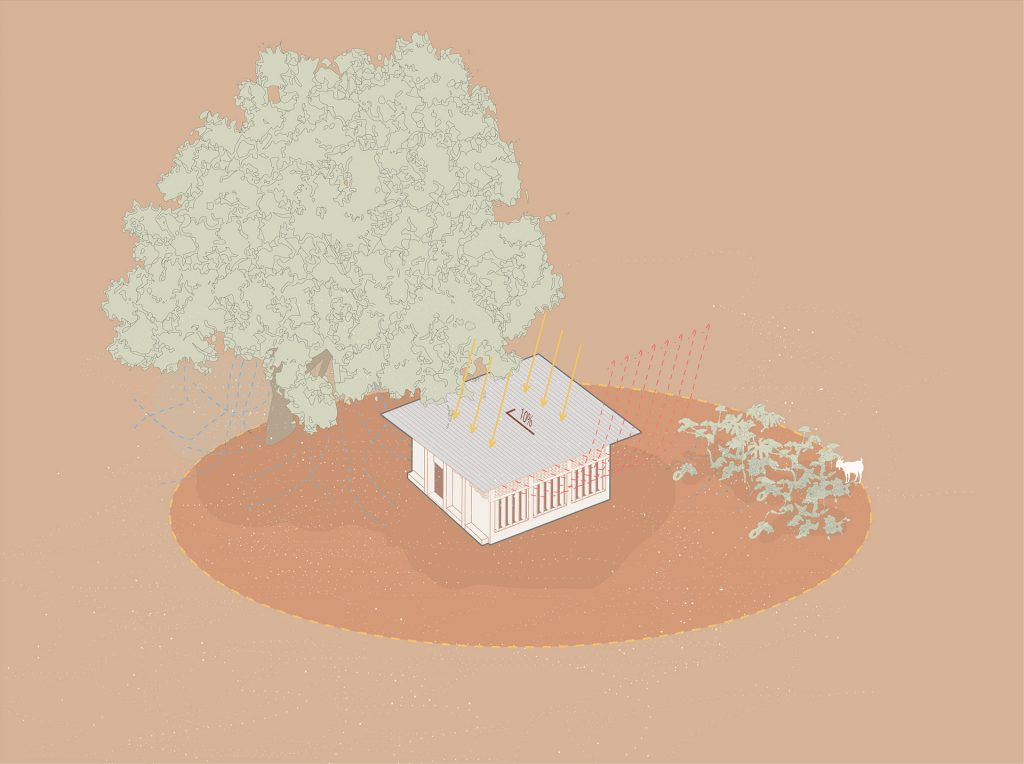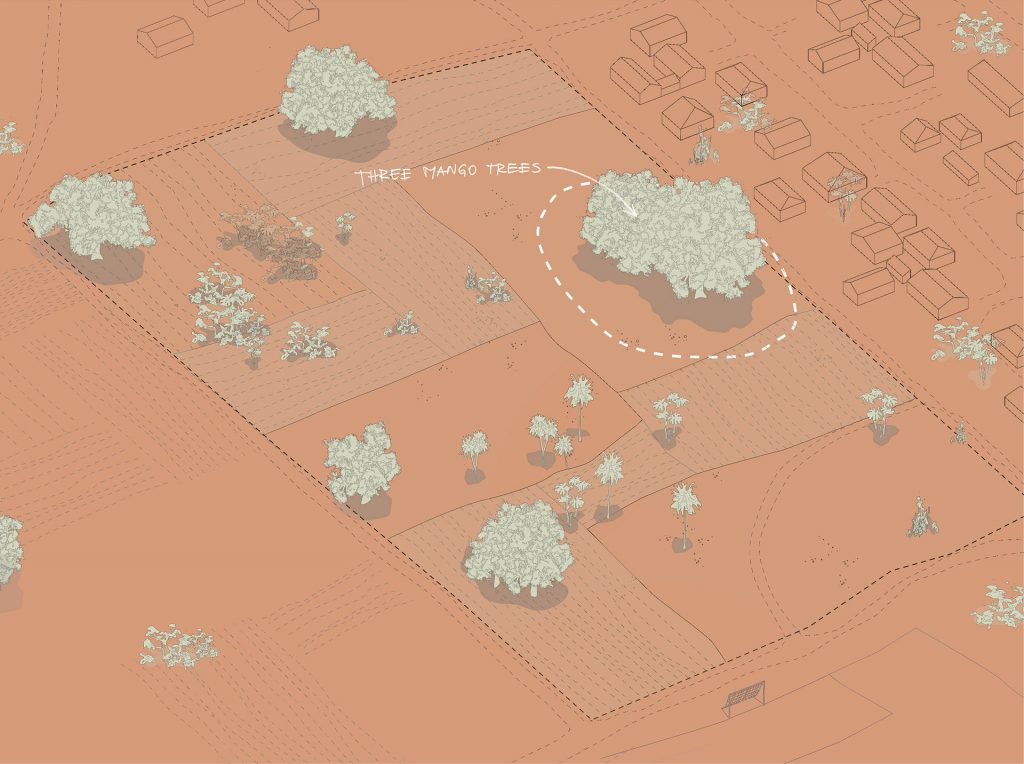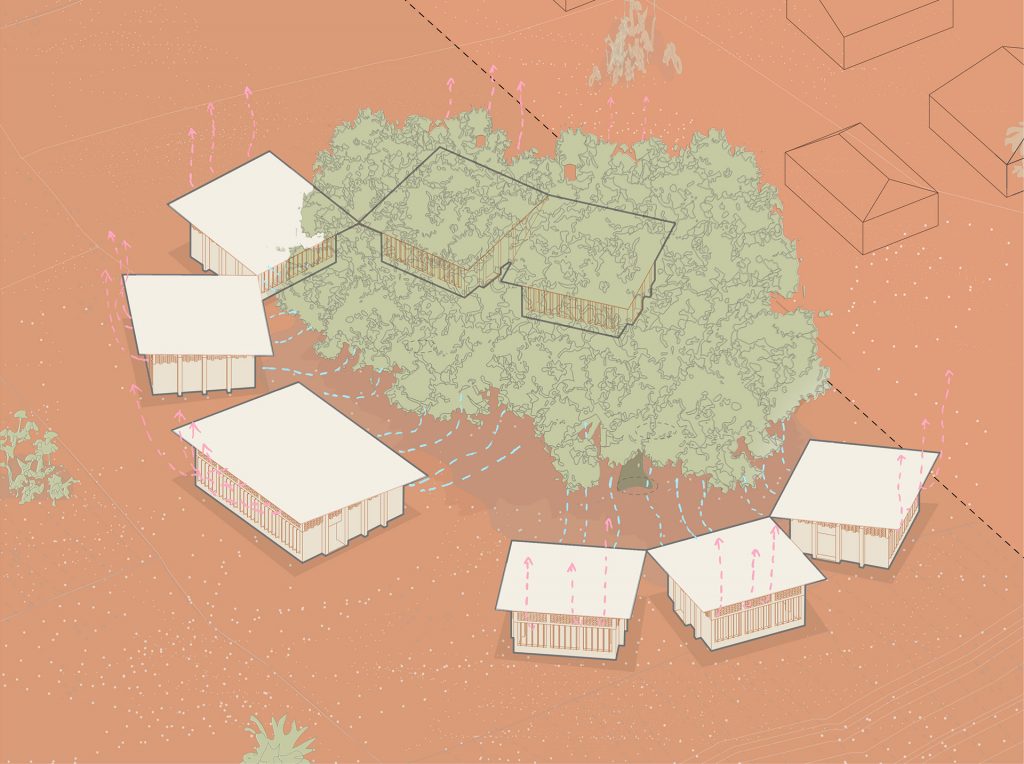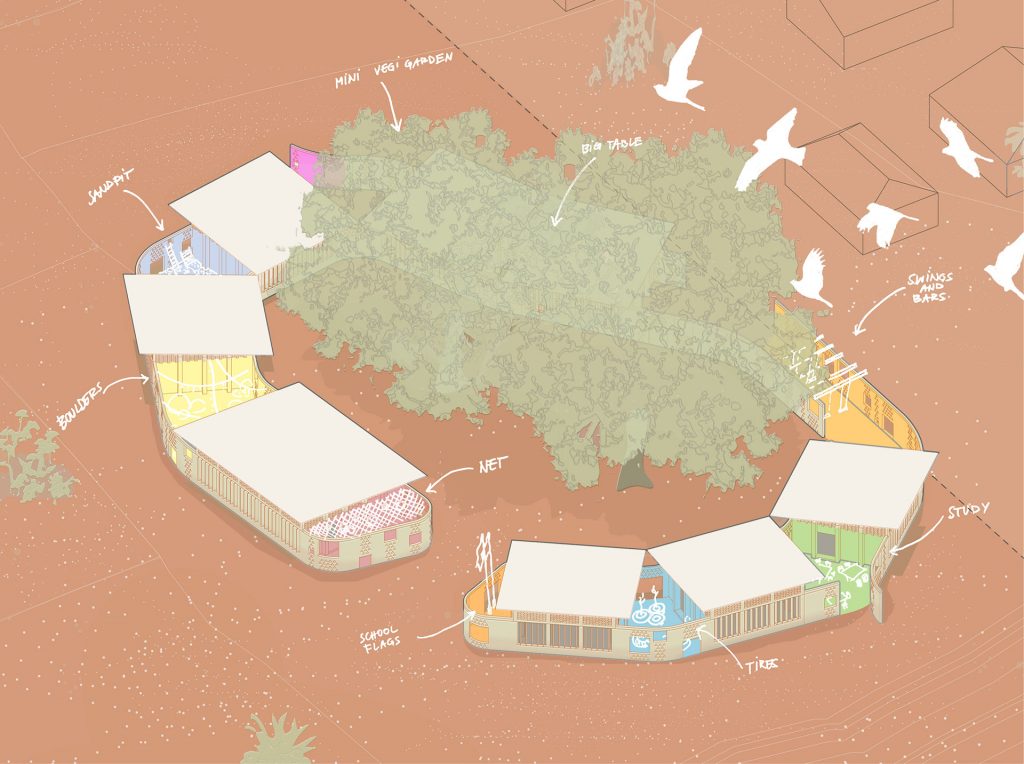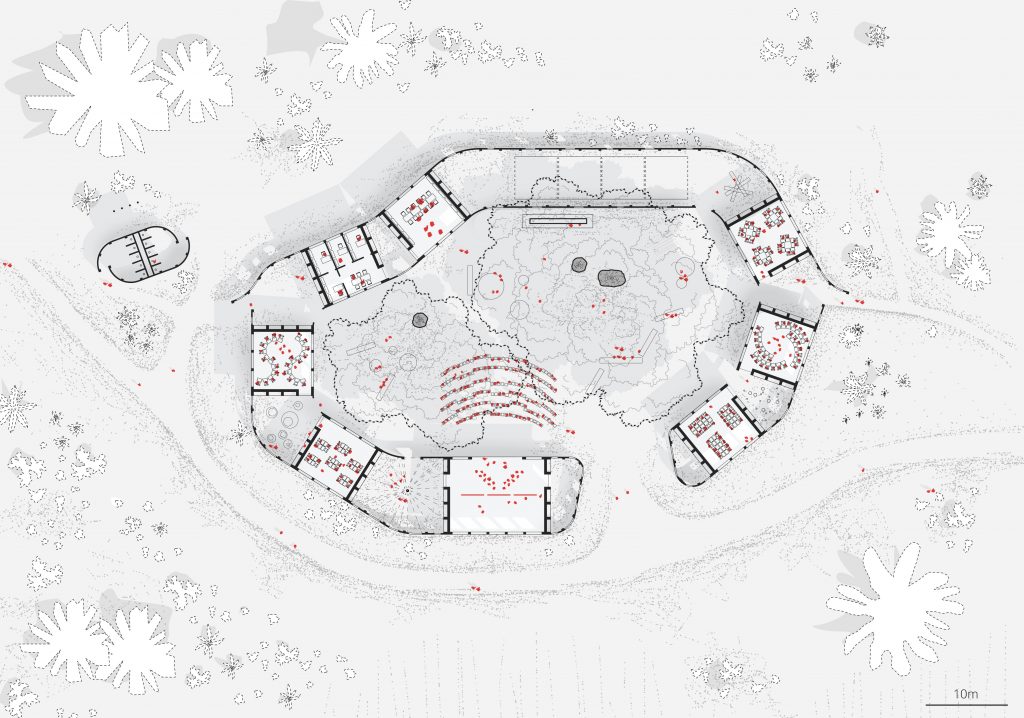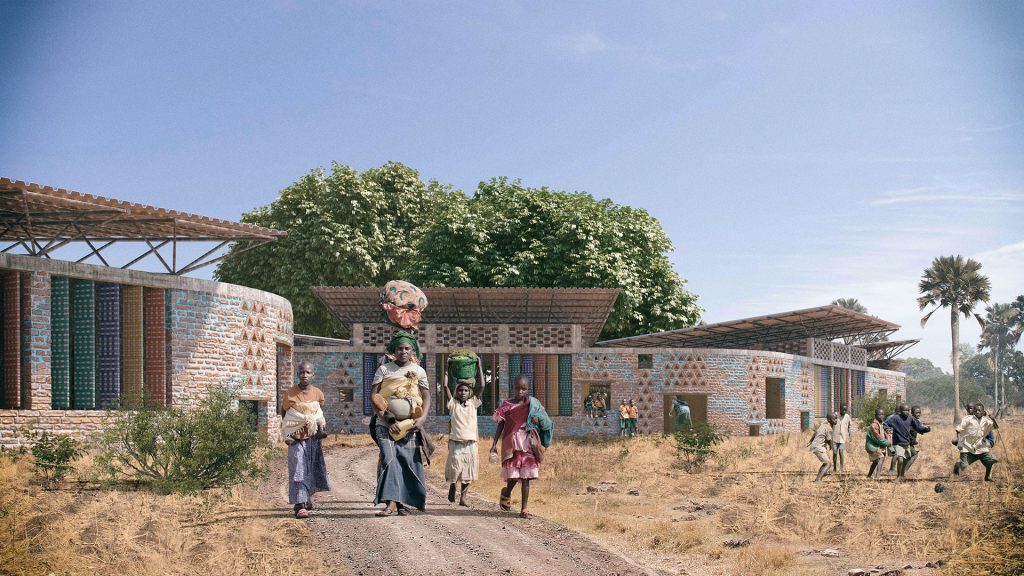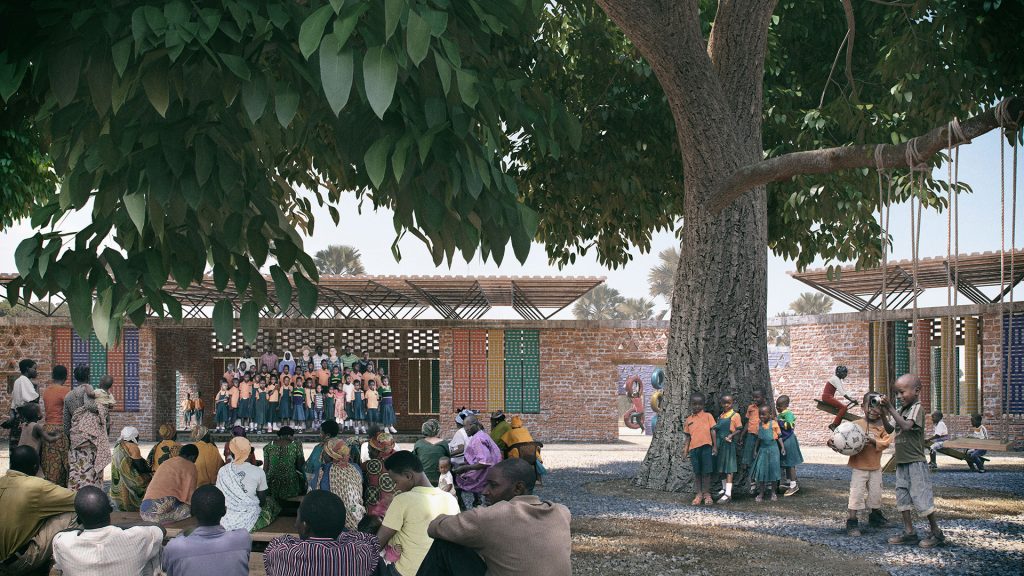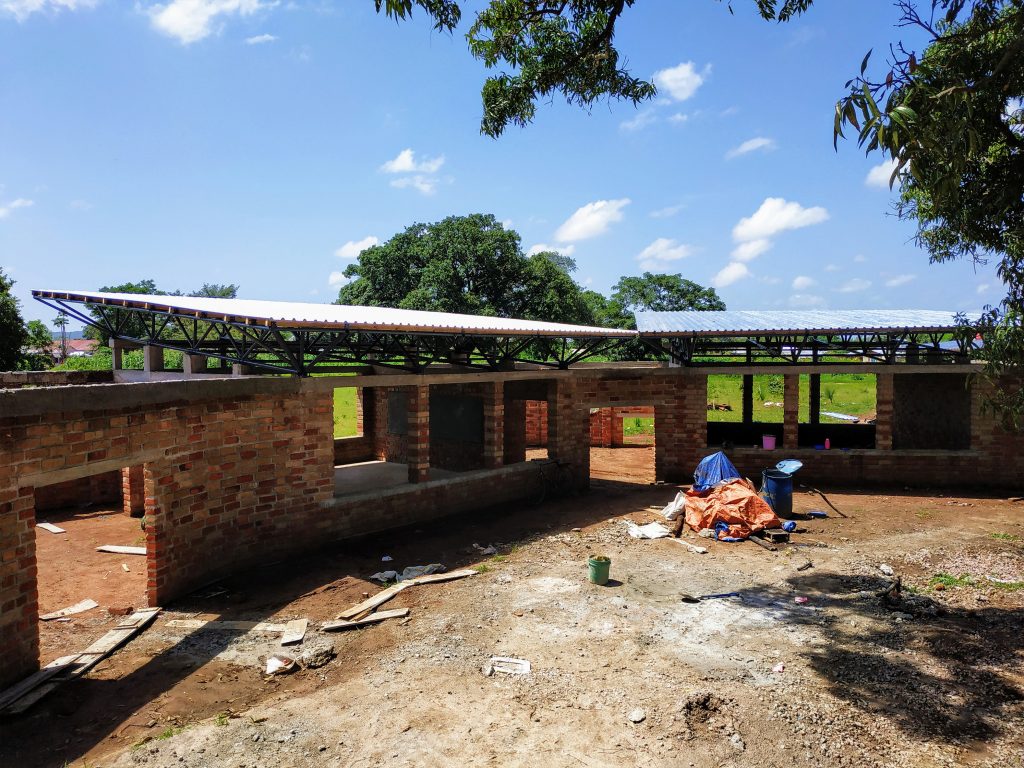Ulyankulu Pre- and Primary School
Location
Ulyankulu, Tanzania
Design
in collaboration with ARH+
Client
WAYAir Foundation
Partner
Caritas Tabora
Structural engineer
Olgierd Rutnicki (Akon)
Donate
Wayair.org
WAYAiR Foundation
WAYAiR Foundation was created by a group of passionate educators that for last 25 years were developing a unique school program in Poznan, Poland. “Łejery” started as a small theatre group for children and evolved to become a school that proves its democratic and art based educational programs year by year. WAYAiR got created to share the knowledge and experience of “Łejery” with others. It’s time for the first ground up project of the Foundation outside of Poland.
Ulyankulu
Ulyankulu is a young, small town in Tanzania. Its a result of migrations of thousands of Burundi refugees in 1970’. Project is based on an in depth onsite research by both educators, migration experts, ethnographers and finally architects. All phases of the project were conducted in a cooperation with local community, organisations, leaders and schools.
Educational village
The fundamental idea of the Ulyankulu School is to create not only a building for education, but a space that can accommodate and stimulate social activities. This is why we call this proposal an educational village. The heart of the WAYAiR educational model is teaching through theatre. Therefore, in the heart of the school a theatre room is designed with the audience placed inside of a central courtyard shaded with the canopy of beautiful mango trees. All classrooms are additionally wrapped within a playful, ornamental, perforated clay-brick wall creating many smaller patios, each designed to suite different outdoor activity and stimulate kids and other Ulyankulu inhabitants to socialize, play and spend time together.
Sustainability & local identity
We believe in a value of traditional knowledge, heritage and local identity complemented by environmental awareness and professional architectural expertise. Therefore our proposal uses materials, details and craftsmanship from Ulyankulu region and creates sustainable and socially inclusive architecture. Classroom structure, shape and especially its double roof structure is designed in order to create efficient passive cooling and prevent overheating of the interior. All of the roofs are able to collect rain water, which will be stored underground and supply all students with necessary water during harsh annual draughts.
Current situation
Nowadays children in Ulyankulu attend schools that are easily overheating, set in a surrounding that does not offer generous outdoor shadow and greenery nor any additional outdoor infrastructure for kids to play, spend after school hours.
Module
Proposed class module is designed for generous ventilation, efficient construction, use of locally produced bricks and employment of local craftsmen. Proposed roof structure prevents overheating of the classroom by allowing air to flow between the primary roof and the class ceiling.
Thermal strategy
Proposed typology is doubly beneficial if located near greenery. Classrooms geometry allows the hot air to easily escape in the direction away from the tree, thus sucking the cold air from underneath the plant inside the classroom, cooling it down. Additionally it is build on top of a thick foundation which thermal mass accumulates colder temperatures during the night and helps to cool the classroom down during the day.
Mango trees
Available plot proposed by the Ulyankulu Church is a generous piece of land today partially used for seasonal agriculture. A part of the plot with three grand mango trees was chosen as a place most suitable for the placement of the school.
Courtyard
In order to grant the highest efficiency of the passive cooling of each class and create an inner central courtyard beneath the canopy of the mango trees classrooms were located along the tree parameter.
Brick ribbon
Using the cheapest, locally available material – the clay brick, all classrooms were wrapped around with a wall, creating clear school boundaries, central open courtyard and many small more introvert courtyards between neighboring classrooms.
Identities
Each classroom courtyard is given a unique identity and color. The serpentine wall is perforated in multiple places and equipped with equipment like nets, swings and slides becoming a continuous, playground. Multiplicity and shapes of the openings inspired by local building techniques give school a playful and ornamental character anchoring it within local esthetic and culture.
Playground
School has an official entrance but kids are invited to penetrate its walls as they please. Additionally many perforations will be used as goals, basket nets and other playtime elements. We hope many will be given a function by kids themselves and that the abstract quality of the facade will stimulate creativeness and simply be fun.
Construction
We are halfway there. The first out of two stages is almost done. Kids will start their classes soon. For now, school consists of two regular classrooms, the theatre classroom, administration block, patios, toilets, and technical area with a water tank. Built volumes make up half of the circumference of the big central courtyard. To complete it, we need to construct the remaining three classrooms. This will hopefully happen in the first half of 2020, but it all depends on funding.
Anyone can become a part of this project!
Visit wayair.org for more informations on how you can help!
Donations at the moment are going to help us produce beautiful ornamental window shutters and palm leaf ceilings woven by local women. So your money would help us build the school, but also employ and stimulate local craftsman. Asente sana!






